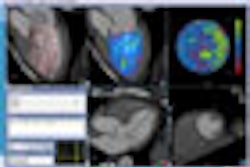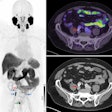Whole-body PET scans done three months after completion of cervical cancer therapy can ensure that patients are disease-free, or warn that further interventions are needed, according to a study from Washington University School of Medicine in St. Louis, published in the November 21 issue of the Journal of the American Medical Association(JAMA).
Without PET, the researchers noted, it can be difficult to tell whether treatment has eliminated cervical tumors, as small tumors are hard to detect with pelvic exams. Cancerous tumors glow brightly in the FDG-PET scans used in the study. Tumor tissue traps more of the FDG than does normal tissue, making tumors readily discernable.
Post-treatment PET scans can reassure patients whose tumors respond well to therapy and identify patients whose tumors have not responded so that their physicians can explore other treatment options before the cancer advances further.
Related Readings
Studies find no drop in head/neck cancer control with less extensive dissection, November 16, 2007
FDG-PET works for nose cancer staging, study finds, November 15, 2007
FDG-PET, MRI show worth in tumor treatment response, November 2, 2007
SUV on FDG-PET can predict cervical cancer prognosis, September 19, 2007
Pilot study shows link between FDG uptake and biomarkers of cervical cancer, September 11, 2007
Copyright © 2007 AuntMinnie.com




















